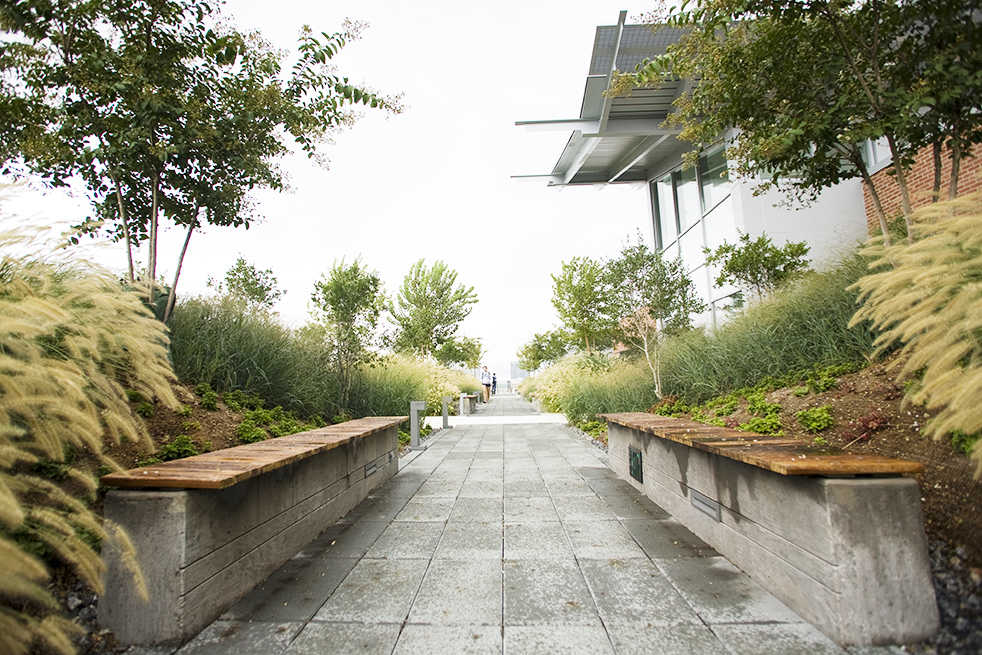Over the last two weeks, the Office of Campus Sustainability has held seven different open offices in order to gather community feedback on the Strategic Plan for Sustainable Practice, which is nearing the end of its March to mid-April review phase.
“We want to ensure that this campus is here for another 150 years,” said Anne Rogers, associate director of the Office of Campus Sustainability.
“So we need to do that by being visionaries about where our resources come from, our risks, our challenges, our weaknesses, and our opportunities to ensure that we don’t face economical, social or environmental issues that prevent Tech from prospering.”
The current draft of the Strategic Plan for Sustainable Practice divides sustainability efforts into five key areas: energy and emission, community and culture, water, built environment and materials management.
Each of the key areas have their own vision and goals. For energy and emissions, the vision is to reduce dependency on fossil fuels and increase carbon neutrality; for water, it is continuing conservation efforts; for materials managing, it is striving to be a Zero Waste Campus; for built environment, it is fostering safe and efficient operations; for community and culture, it is inviting collaborative enthusiasm for sustainability.
The Strategic Plan, anticipated to be approved by administration this summer, is separated into near-term goals to be completed by 2020 and long-term goals to be completed in ten years.
In the interim before 2027, there will be annual progress reports and a review every 2-3 years to ensure the plan is on track. The Strategic Plan’s near-term energy and emissions vision is in part a reiteration of previous commitments Tech made in its 2009 Climate Action Plan (CAP), which itself was mandated after Tech signed the American College & University President’s Climate Commitment in 2007. The 2009 Climate Action Plan outlined a 15 percent reduction of greenhouse gas emissions by 2020, 40 percent reduction in emissions by 2040 and carbon neutrality by 2050, all compared against the 2007 baseline of 325,066 million British Thermal Units.
A Spring 2013 report by Sinan Sinharoy projected that if Georgia Tech conservation efforts continued on a linear projection, only 50 percent of emissions would be reduced by 2050.
This means that in order to achieve the long-term goals outlined in the Climate Action Plan, the Institute will have to accelerate its reduction of energy consumption and emissions.
The Strategic Plan adds new goals in the energy and emissions category, including goals of an emissions-free campus fleet and significant increases in sustainable commuting by students, faculty and staff by 2027.
Other notable long-term goals (to be achieved by 2027) across the four other categories include plans to reduce water consumption by 50 percent, diverting 75 percent of campus waste from the landfill and ensuring all new building projects meet third-party green building criteria (such as LEED certification).
Encoded into the Strategic Plan is the effort to keep the Tech community involved in campus sustainability plans through data transparency as well as linking sustainability research and curriculum into campus operations.
Rogers and her colleagues stress the importance of engaging the Tech community to actively work on incorporating sustainable practices into their daily lives.
“As it relates to sustainability, there’s a lot that we can do already. There’s a lot of technology, in terms of advancing projects,” said Sarah Neville, sustainability coordinator at the Office of Campus Sustainability.
“A lot of the time, the limiting factor is really the people factor and how invested are people in these solutions.
“How invested is the student body in changing the practice? How invested are staff? This plan is really about bringing all of that energy to a focus,” Neville said.
The draft of the Strategic Plan for Sustainable Practice can be found on the Campus Sustainability website with means to get involved with its further development. The final feedback sessions took place on April 14, but the Office of Sustainability is reachable via [email protected].
